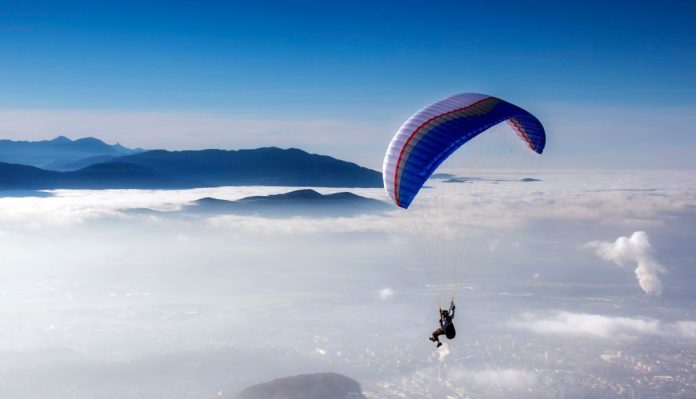The parachute helps slow your fall, but it won’t completely eliminate the impact when you hit the ground after free falling from thousands of feet in the air. What determines how hard you hit the ground when skydiving? To answer this question, we’ll need to look at two major factors that affect how quickly your body hits the ground: your weight and your descent speed. Both of these determine how long your skydiving fall takes, and they both affect how fast you hit the ground when skydiving.
How Hard Do You Hit The Ground When Skydiving?
The human body is a pretty amazing machine. There are all sorts of safety mechanisms and devices that protect us from injury, but they’re only designed to mitigate injuries, not prevent them. That’s why skydiving can be such a dangerous activity; there’s always the chance that something could go wrong and we could wind up injured. Hitting the ground after jumping out of a plane at 13,000 feet doesn’t sound like it would be too bad, right? I mean, we barely feel anything when we jump down off our couch or climb down from our bed in the morning. But that doesn’t mean it’s not intense! In fact, free-falling from 13,000 feet can result in as much force as being thrown from an airplane at 3500 feet! To put this into perspective, think about falling off a tall building–you’ll probably reach terminal velocity after about 500 feet. So imagine if your fall was accelerated by another 2000 feet in just 15 seconds! If we calculated how fast your head would be moving during those 15 seconds (based on g=9.8 m/s^2), it would be moving at over 130 miles per hour!
How long does it take to get to the ground when skydiving?
It takes about 10 seconds to reach terminal velocity, which is the point in time at which gravity is pulling with enough force to cause an object (you) to fall at a constant speed. At this point, you are traveling at roughly 120 miles per hour. That’s fast! At this speed, it would take just over two minutes to get from one side of the Grand Canyon to the other. The next few moments will be some of your most intense as your body prepares for landing. Your feet and legs tighten up and release energy that has been built up during freefall. You’ve now reached what scientists call terminal velocity.
First, let me explain what terminal velocity means: Terminal velocity is the maximum rate at which an object can travel while falling due to gravity alone; once reached, any additional acceleration due to gravity becomes negligible.
This means that there is no more kinetic energy left because all of its gravitational potential energy has been converted into kinetic energy. But why does it matter if we have reached terminal velocity? When you’re approaching Earth’s surface, your parachute may not open because the air molecules are compressed and friction on the parachute slows its opening process.
At what speed do you hit the ground?
This is a difficult question to answer and it depends on many factors like height of jump, weight, wind resistance, etc. However, if we assume a standard height of 14000 feet and that your body is approximately 80% air – in order for your body not to experience any G forces (gravity) – you would have to be traveling about 120 mph before hitting the ground. This speed will decrease as you get closer to earth because of gravity but your body will still be experiencing around 30 Gs at this point. The average person’s brain can only withstand 3-5Gs so don’t try this at home! It’s unlikely you’ll die from the impact but there are many other dangers associated with skydiving. A parachute does not automatically deploy and there is no safety net. It takes 4 minutes just to open your parachute after jumping out of an airplane. There are also plenty of hazards once you land, including sand or water filled ditches which can cause broken bones and joint damage. Lastly, free falling at such speeds doesn’t allow much time to react to things happening below – such as power lines or cars crossing paths with your landing area – so there are plenty more risks associated with skydiving than most people realize!
Do you get a dropping feeling in your stomach when your freefall?
The freefall is what makes this activity so exciting. I always get a dropping feeling in my stomach, and my face starts to break into a smile as soon as I’m released from the plane. Your adrenaline kicks in and it feels like something between a rollercoaster ride and being on an amusement park ride. It’s exhilarating! A lot of people don’t know that there are different types of skydives: tandem, static line, or instructor-led jumps. Tandem jumping is where one person (the tandem master) will jump with another person attached to him/her via parachute lines. These two people wear special harnesses which have seats attached to them. One person sits behind the other and then they connect their harnesses together before jumping out of the plane. Static line is just like tandem but instead of both people wearing a harness, one jumps connected only by a cord which has been pulled from above by someone at ground level. With static line, both jumpers use parachutes for more control over how they descend back to earth but with less experienced jumpers, it can be more dangerous because it may be difficult to open their parachutes in time should something go wrong during the descent.
What position do you have to be in when you hit the ground?
When I was in freefall, my legs were slightly bent and my arms were out to my sides. At terminal velocity, which is around 200 miles per hour, it doesn’t matter what position your body is in because your weight will be distributed evenly across it. When I was about ten feet from the ground, I pulled my knees up to my chest so that I would have a softer landing. To absorb some of the force of impact with the ground, it’s best to roll into a ball and tuck your head into your chest so that you’re as compact as possible. The less surface area you have in contact with the ground, the less damage you’ll incur. With my two backpacks strapped to me, I had a lot more surface area in contact with the ground than if I hadn’t had any packs on me. With this in mind, I’m glad that someone had given me their second parachute so that they wouldn’t get injured while they tried to pull off an emergency landing.
Conclusion
So, how hard is it to hit the ground while skydiving? It depends. The faster your descent and the higher your elevation, the harder you will hit. However, if your parachute malfunctions or there’s a sudden wind gust that pushes your body in a different direction, then you could find yourself landing more softly. And on a happier note, with all of these factors taken into account, it’s almost impossible for someone to die from hitting the ground. Most people just wake up after a few minutes. You may have heard stories about the worst possible outcome, but they are extremely rare. Most injuries happen because people land incorrectly. Even though I landed awkwardly on my back after coming down, my feet had cushioned me enough to make sure that I would be okay-though it didn’t stop me from being shaken up by my experience!

